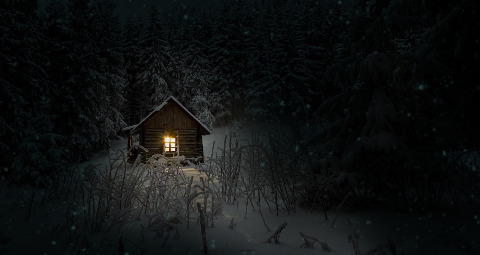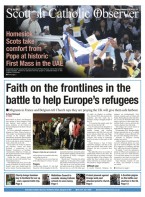February 1 | ![]() 0 COMMENTS
0 COMMENTS ![]() print
print

Coorie in to beat the winter darkness
Clare M Fodey surveys an icy landscape to find the simple things that keep us warm at heart
Well, how was January for you? Was it a Dry January, Veganuary, or a ‘New Year, new you’ courtesy of your local gym or slimming club?
Has an attack of de-cluttering taken you over as part of a very early spring clean?
Now that the Christmas decorations are a memory, the nights seem darker.
No lights from trees or candelabras brighten house windows and accompany the traveller home on chilly evenings.
We have turned the corner of the year but, though Easter eggs have sneaked quietly onto shelves in some shops and brave green shoots have appeared above the cold soil, we are still very much in winter.
Perhaps your January has been full of music, at Celtic Connections, your own local music festival, Burns celebrations or even the festival of Up Helly Aa.
Such festivals, in one sense, bring cheer to the darkness of the season but, in another sense, require the darkness to better see the light of the torches or be drawn through the singing into the Celtic twilight.
In the chiaroscuro style of art, both darkness and light are used to define a figure and give depth. More exactly the style of Tenebrism from the Italian tenebroso, murky, (a pronounced form of chiaroscuro) uses darkness to dominate most of the painting.
Its use creates atmosphere and in turn a spotlight effect on one particular area of illumination. Rembrandt’s landscape Rest on the Flight into Egypt is one such example.
In the liturgy of the Church, darkness can be used to emphasise the coming light: at the Easter Vigil the Pascalcandle, lit from the Easter fire, allows the lighting of all other candles and by candle light we hear the Exsultet.
Or again the darkness aids the creation of a sacred atmosphere conducive for prayer at a Lessons and Carols service, a Taizé evening, Lourdes candle-lit procession or indeed a Nightfever event in the church.
Aidan Nichols OP writes in Looking at the Liturgy that many of our newer Catholic churches lack a sense of the transcendent, that they lack a sense of mystery and beauty.
The use of dim lighting, candles and music can perhaps aid in the creation of that prayerful environment.
The younger reader, or those who are familiar with the classic children’s book The Owl Who Was Afraid of the Dark by Jill Tomlinson, will be familiar with this particular enquiry into darkness.
Young Plop, a ‘scared of the dark’ baby barn owl, is sent out during the day to learn about the dark from a variety of people and animals that happen near his tree.
Among other things, he discovers in conversation with an elderly lady that dark is kind: her wrinkles don’t show in the dark and it’s a good time to remember.
Hygge, the Danish notion of all things cosy, has rather taken hold on TV and in magazines across the UK, but we had the Scots version—coorie —long before it too made it into print.
To coorie in, coorie doon or cuddle up with your granny by the fire, with a book or while listening to older family and friends telling stories and singing songs, while the fire and the dim lights sent you off to sleep, is all things cosy and secure.
In a review in the Spectator of Nina Edwards book Darkness: A cultural history, when considering the merits or otherwise of electricity, Alexandra Masters writes: “The gentle light of the lamp with its imperfection, impetuosity and limitations… is more in sympathy with this human nature of ours.”
I won’t be getting rid of the electricity anytime soon but this year I think more evenings with friends round the dinner table talking and reminiscing, in the softer light of candles by the fire (or even the gas central heating), will take us through the darkness of the winter and on into the spring and beyond.
- Clare Fodey is a member of the St Andrew’s Foundation for Catholic Teacher Education










